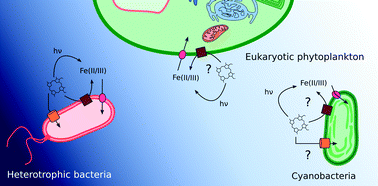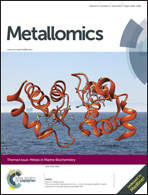Heme in the marine environment: from cells to the iron cycle
Abstract
Hemes are iron containing heterocyclic molecules important in many cellular processes. In the marine environment, hemes participate as enzymatic cofactors in biogeochemically significant processes like photosynthesis, respiration, and nitrate assimilation. Further, hemoproteins, hemes, and their analogs appear to be iron sources for some marine bacterioplankton under certain conditions. Current oceanographic analytical methodologies allow for the extraction and measurement of heme b from marine material, and a handful of studies have begun to examine the distribution of heme b in ocean basins. The study of heme in the marine environment is still in its infancy, but some trends can be gleaned from the work that has been published so far. In this review, we summarize what is known or might be inferred about the roles of heme in marine microbes as well as the few studies on heme in the marine environment that have been conducted to date. We conclude by presenting some future questions and challenges for the field.

- This article is part of the themed collection: Metals in marine biochemistry

 Please wait while we load your content...
Please wait while we load your content...